Drones for Stockpile Calculation in Coal Mining
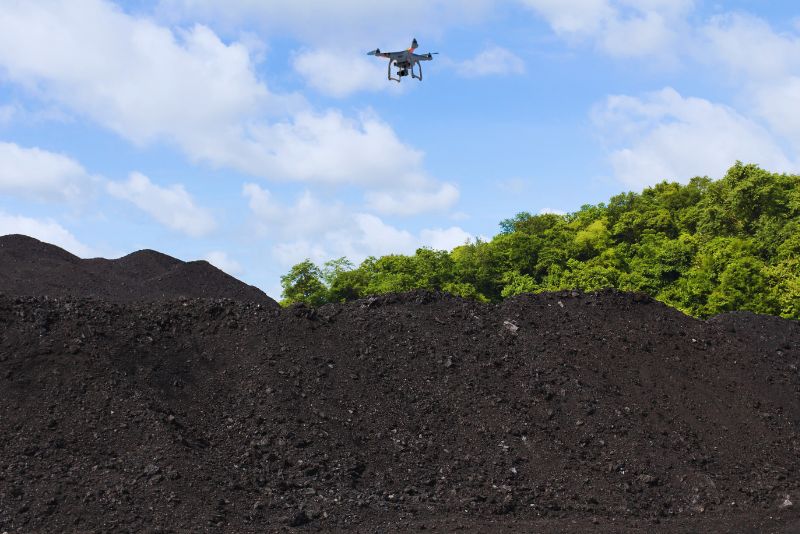
The Future of Coal Mining: Drones for Stockpile Calculation In an industry where precision is paramount, drones are revolutionizing how stockpile calculation is done in coal mining. By employing UAV for stockpile calculation, mining operations are experiencing unparalleled efficiency, accuracy, and safety. A Paradigm Shift: Why Use Drones for Stockpile Calculation? Using this technology to calculate over traditional methods offers multiple advantages. Drones provide fast, accurate data collection, allowing mining operations to keep up-to-date records of their stockpiles. Furthermore, drones drastically reduce the risk associated with manual measurements, thereby enhancing safety standards. Also Read: Spotlight on Technology: Drone LiDAR and its Groundbreaking Applications How it Works: Drones for Stockpile Calculation Equipped with advanced sensors and cameras, drones capture high-resolution images of stockpiles from various angles. This data is then processed to generate 3D models of the stockpile, enabling accurate volume calculations. Moreover, with drone technology, even large or inaccessible stockpiles can be measured with relative ease. Read More: How to Use Drones to Measure Stockpiles and Track Volumes More Accurately The Implementation: Drones in Action Across the globe, numerous coal mining operations are embracing drone technology for stockpile calculation. By doing so, these operations are able to save time, improve accuracy, and maintain safer working conditions. Also See: Unearthing Efficiencies: The Role of Drones in Mining’s Digital Transformation Beyond Coal: Drones and Stockpile Calculation in Other Industries While the benefits of using UAV for stockpile calculation are evident in coal mining, the technology has broader applications. From construction sites to aggregate quarries, drones are fast becoming an indispensable tool in accurate stockpile measurement. Read More: Drones For Stockpile Measurements The Takeaway: The Impact of Using UAV for Stockpile Calculation In conclusion, the use of UAV for stockpile calculation is a game-changer. This innovative technology, with its manifold benefits, is set to be a driving force in not just coal mining but in numerous industries where precise stockpile calculation is essential.
Drone Market Size: Unraveling Its Potential

Soaring High: Understanding the Drone Market Size When it comes to technologies that have taken the world by storm, drones sit comfortably at the top of the list. With their impressive capabilities and diverse range of applications, it’s no surprise that the drone market size has been expanding at an unprecedented rate. This article uncovers the current size of the drone market and takes a glimpse into its future potential. Broad Horizons: The Scope of the Drone Market The drone market isn’t limited to one industry or function. From agriculture to defense, real estate to entertainment, drones have found a place in almost every industry. This wide-ranging applicability contributes significantly to the increasing UAV market size. Also Read: Transforming Business Landscape: How AI in Drones Can Propel Success Figures and Forecasts: Assessing the Drone Market Size The market for drones has been on a steady upward trajectory, with the industry’s value estimated in billions of dollars. The exact UAV market size varies based on different reports, but they all agree on one thing: the growth is exponential and shows no signs of slowing down. Read More: Drone market size to grow by USD 27.78 billion: Driven by advancements in sensors and the emergence of low-cost drones – Technavio Driving Factors: What Fuels the Drone Market Growth? Several factors are driving the growth of the drone market. Advancements in technology, decreasing costs, increasing commercial applications, and changing regulations are all contributing to the escalating UAV market size. Also See: Soaring Efficiency: The Benefits of Drone Services for the Oil & Gas Sector The Future: Predicted Growth of the Drone Market The future of the drone market looks promising, with expectations of continued growth. Drones are set to play a more significant role in our lives, from delivering packages to monitoring traffic, underpinning the optimistic forecasts for the drone market size. Read More: DRONEII Drone Market Report: Where the Drone Industry Will Grow the Fastest by 2030 Navigating the Sky: The Impact of Drone Market Growth The growing UAV market size indicates an upward trend that is set to transform various industries. As drones become more integrated into our lives, they will change how we work, play, and interact with the world around us. In conclusion, these drones, with its rapid growth and far-reaching implications, highlights the transformative potential of drone technology. As we move forward, it will be interesting to watch how this market evolves and how drones will shape our future.
How AI in Drones Can Propel Business Landscape

Pioneering Business Success: The Role of AI in Drones The world of business is continually evolving, with new technologies like AI in drones leading the charge towards innovation. Artificial Intelligence (AI) has brought an unprecedented level of autonomy and precision to drone operations, opening new horizons for businesses across various industries. This article explores how AI in UAV is changing the business landscape. Streamlining Operations: AI-Enhanced Efficiency AI-powered drones can perform complex tasks with remarkable efficiency. Whether it’s inspecting infrastructure, monitoring crops, or surveying construction sites, AI in UAV allows these tasks to be completed quickly, accurately, and without the need for constant human supervision. Also Read: Why Opting for Drone Services is a Smart Business Move Precision and Predictability: Enhancing Decision-making AI in UAV isn’t just about automating tasks; it’s also about enhancing decision-making. These smart drones can analyze the data they collect in real-time, identify patterns, and even make predictions. This can help businesses make better-informed decisions, improving outcomes, and reducing costs. Read More: What is the Role of Artificial Intelligence in Drone Technology? Safety First: Reducing Risk with AI By taking on risky tasks, AI-powered drones can significantly reduce the exposure of human workers to dangerous conditions. This is particularly beneficial in industries like mining, oil and gas, and construction, where safety is a constant concern. Also See: Integrating Drone Technology: Starting a Drone in Oil & Gas Company’s In-house Program Scaling up: Drones and AI Drive Business Growth As businesses grow, the capabilities of it can scale with them. Drones can handle increased workload without sacrificing speed or accuracy, making them an excellent investment for growing businesses. Read More: What is the Role of Artificial Intelligence in Drone Technology? Shaping the Future: AI in Drones AI in UAV is not just a futuristic concept; it’s a present reality reshaping how businesses operate. As AI continues to evolve, we can expect drones to become even more capable, bringing unprecedented benefits to industries across the board. In conclusion, this technology is transforming businesses by enhancing efficiency, improving safety, supporting growth, and driving decision-making. As we move further into the era of digital transformation, the combination of AI and drones is set to become a cornerstone of successful business operations.
Drone Services: Why It Is A Smart Business Opt
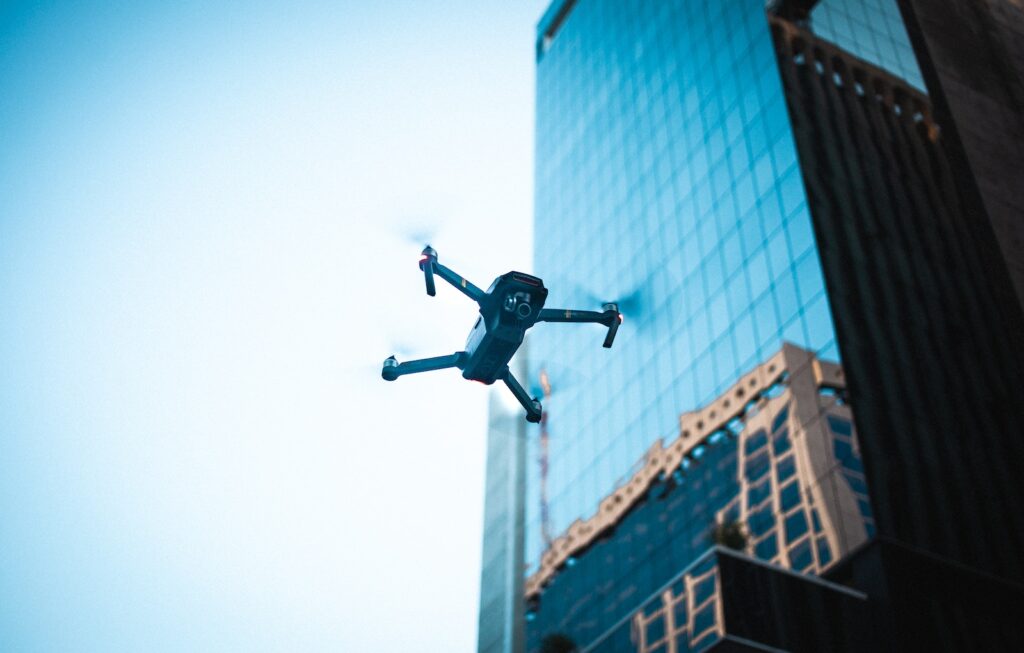
The High-flying Advantages of Opting for Drone Services In today’s competitive business landscape, efficiency, cost-effectiveness, and innovation are key. Drone services offer these benefits and more, making them a strategic choice for businesses across various industries. Let’s take a journey to explore why hiring UAV services could be a game-changing decision for your company. Cost-Effective Strategy: No Ownership Costs One of the most compelling reasons to choose UAV services over owning a fleet is cost-effectiveness. Owning drones means incurring costs for purchasing, maintenance, repairs, upgrades, and training staff. By opting for the services, you pay only for the services you need when you need them, saving your business a substantial amount of money in the long run. Also Read: Guided from Above: How Drones Navigate the Skies Expertise at Your Fingertips: High-level Operation and Maintenance Drone service providers are specialists in their field, possessing deep knowledge and expertise. They can manage complex operations, perform regular maintenance, and ensure safe and efficient drone operation. This level of service might be challenging to replicate with an in-house team, especially for businesses new to drone technology. Read More: Buy a Drone or Hire a Pro? 5 Things to Consider Before Deciding Stay Ahead with Cutting-Edge Tech: Access to Latest Technology Drone technology is continually evolving. By hiring UAV services, your company can take advantage of the latest advancements without needing to continually invest in new equipment. The service providers update their fleet with the newest drones and technology, ensuring you always get top-tier service. Also See: Green Warriors: Planting Mangrove Using Drone Technology to Combat Climate Change Focused Business Operations: No Diversion of Resources Running a drone operation requires diverting resources and time, which could be better utilized to focus on your core business. By hiring the services, your company can concentrate on what it does best and leave the complex drone operations to the experts. Read More: 4 Differences Between Owning a Drone and Subscribing to a Turnkey Commercial Drone Solution Scalable and Flexible: Adapting to Your Business Needs UAV services offer scalability and flexibility that may not be possible with an owned fleet. As your business grows or your needs change, the service can be scaled up or down without any significant capital investment or logistical challenges. See More: Sky-high Revolution: How Drone Innovation is Driving Industry Transformation The Future is Here: Embracing Drone Services As businesses navigate the digital age, embracing services like drone operations can open up new horizons of efficiency, innovation, and cost-effectiveness. Remember, the decision between hiring drone services and buying drones should be strategic, considering both the immediate and long-term implications. Choose wisely, for the sky is the limit!
Guided from Above: How Drones Navigate the Skies
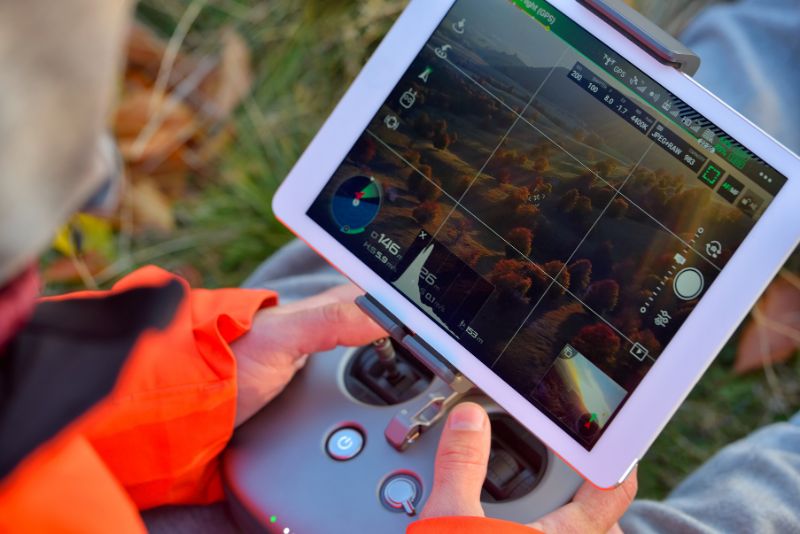
Charting the Course: Understanding How Drones Navigate How drones navigate is a result of a harmonious blend of advanced technology and complex algorithms. From GPS systems to onboard sensors, let’s delve into the fascinating mechanisms that enable drones to traverse the skies. GPS: The Guiding Star Global Positioning System (GPS) plays a pivotal role in drone navigation. Drones use GPS signals to determine their position relative to specific waypoints, enabling them to follow pre-defined flight paths or return to a home location. Also Read: Flying into the Future: The Role of Drones in Digital Transformation Sensing the World: Onboard Sensors In addition to GPS, drones are equipped with a multitude of onboard sensors that contribute to navigation. These include altimeters for determining altitude, accelerometers and gyroscopes for maintaining stability, and cameras for visual navigation and obstacle avoidance. Read More: How Does a UAV Navigation System Work? The Brain of the Operation: Flight Controllers The flight controller is the drone’s ‘brain’, processing data from GPS and onboard sensors to control the drone’s movements. By adjusting the speed of the drone’s motors, the flight controller can make the drone climb, descend, or change direction. Also See: Up in the Air: Why Drone Training is the Key to Successful Drone Programs Overcoming Obstacles: Collision Avoidance Systems Many drones are equipped with collision avoidance systems, which are crucial for safe navigation. These systems use sensors such as cameras, ultrasonic sensors, or lidar to detect and avoid obstacles in the drone’s flight path. Read More: Autonomous Drone Navigation System Ends Reliance on GPS Autonomous Flight: Waypoint Navigation Waypoint navigation allows drones to fly autonomously along a pre-defined flight path. Operators can set waypoints using a map interface, and the drone will automatically fly from one waypoint to the next, using GPS to track its position. See More: Sky-high Revolution: How Drone Innovation is Driving Industry Transformation The Future of Drone Navigation As drone technology continues to advance, we can expect improvements in navigational systems, such as enhanced GPS accuracy, more sophisticated obstacle avoidance, and better autonomous flight capabilities. This progression will make drones even more versatile and valuable tools in numerous applications. In conclusion, drone navigation is a fascinating blend of advanced technology and complex algorithms. Understanding how drones navigate offers a glimpse into the future of autonomous vehicles and the endless possibilities they present.
Up in the Air: Why Drone Training is the Key to Successful Drone Programs
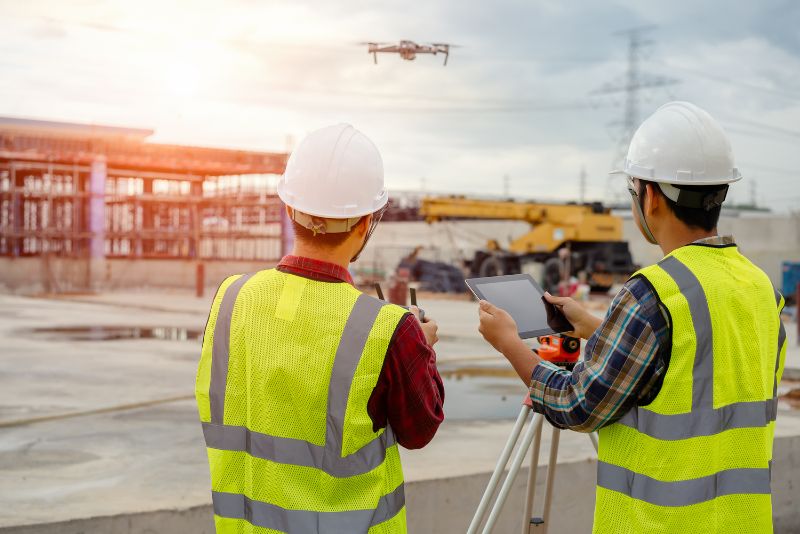
Taking Flight: The Importance of Drone Training For the successful implementation of a drone program, comprehensive UAV training is a pivotal element. Not only does it enhance the safe operation of drones, but it also maximizes the benefits and efficiency of drone usage. Promoting Safety Through Training Safety is paramount in any aviation-related operation, including drones. UAV training provides operators with an understanding of the rules and regulations of drone usage, fostering a culture of safety and risk mitigation. Also Read: Safety from the Sky: Using Drone for Confined Space Inspections Enhancing Operational Efficiency Well-trained drone operators are more capable of utilizing drones to their full potential. They understand how to optimize flight paths, handle various weather conditions, and efficiently use drone features and capabilities. Read More: The Benefits and Importance of Drone Training Preparing for Unexpected Scenarios UAV training equips operators with the skills to handle unexpected situations, such as technical malfunctions or emergency landings. This preparation is crucial to prevent potential accidents and ensure smooth operations. Also See: High-Flying Inspectors: The Role of Drones in Dam Inspections Understanding Data Collection and Analysis Drones collect a wealth of data, and understanding how to effectively capture, analyze, and utilize this data is an integral part of UAV training. This ability can significantly enhance decision-making and operational outcomes. Read More: Is drone training required and what options are out there? Compliance with Regulations UAV training ensures operators understand and comply with local and international drone regulations. This understanding is essential to avoid legal issues and ensure the drone program’s ongoing success. See More: Taking to the Sky: Unravelling Unmanned Traffic Management The Future of UAV Training As drone technology continues to advance, so too will UAV training. Future training programs will likely incorporate more advanced technologies such as virtual reality and AI-assisted learning. This will ensure operators are well-prepared to leverage the full benefits of drone usage. In conclusion, UAV training is a cornerstone of successful drone programs. By equipping operators with essential knowledge and skills, training ensures the safety, efficiency, and legality of drone operations.
Taking to the Sky: Unravelling Unmanned Traffic Management
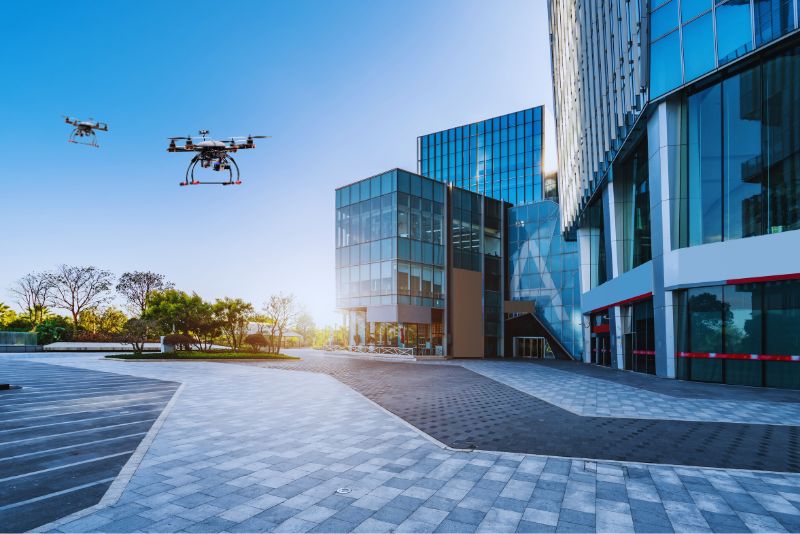
Understanding Unmanned Traffic Management In the rapidly evolving drone industry, Unmanned Traffic Management (UTM) is a vital development. UTM is a system designed to ensure safe and efficient drone operations, particularly in low-altitude airspace. Let’s delve deeper into what UTM entails. The Necessity of UTM As drone usage expands across various industries and recreational activities, managing the traffic of multiple drones becomes crucial. UTM aims to integrate drones safely into the airspace, reducing the risk of mid-air collisions and ensuring smooth operations. Also Read: Solar Powered Progress: How Drones Help in Solar PV Plant Construction Key Elements of UTM UTM encompasses several key components, including drone identification and tracking, dynamic airspace designations, weather information integration, and conflict management. These elements work together to enable safe and efficient drone operations. Also See: What is Unmanned Aircraft Systems Traffic Management? UTM and Drone Operators For drone operators, UTM provides real-time information about airspace restrictions, other drones’ locations, and potential hazards. This information is crucial for safe flight planning and execution. Read More: Soaring Above the Rest: Choosing the Best Drone for Your Company’s Operations UTM and Air Traffic Control While traditional Air Traffic Control (ATC) handles manned aircraft operations, UTM focuses on unmanned aircraft. In many ways, UTM is similar to ATC but is specifically tailored to the unique needs and challenges of drone operations. See More: Connecting authorities with drone pilots The Future of UTM The future of UTM is promising, with advances in technology expected to enhance its capabilities further. As we move towards a future with increased drone usage, UTM will play an increasingly critical role in maintaining the safety and efficiency of our skies. In conclusion, Unmanned Traffic Management is an essential development in the drone industry. It’s paving the way for a future where drones and manned aircraft can safely and efficiently share the skies.
High-Flying Inspectors: The Role of Drones in Dam Inspection
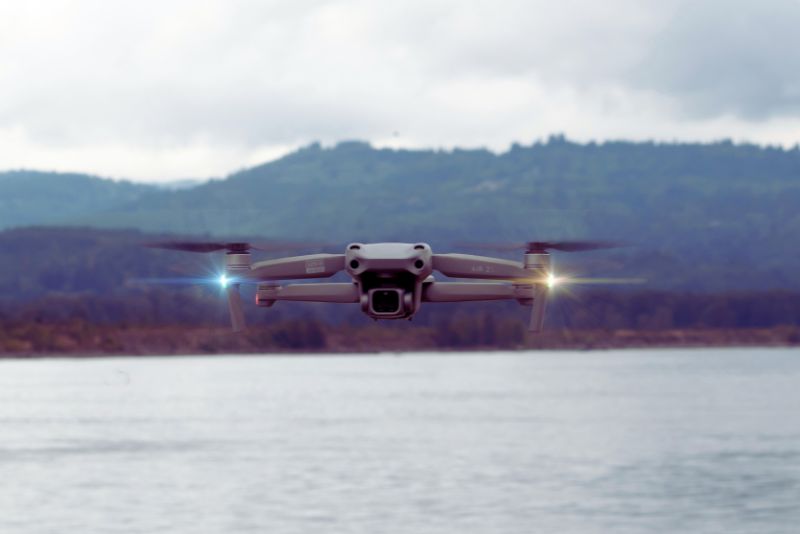
Soaring to Safety: Drones and Dam Inspections The use of drones for dam inspection offers a multitude of advantages over traditional methods. UAV are enhancing dam inspection processes, improving safety, and efficiency, and providing high-quality data for decision-making. Improved Safety and Risk Reduction Dams can be vast, complex structures with hard-to-reach areas. Sending human inspectors into these areas can be dangerous. Drones offer a safe alternative, reducing the need for personnel to access potentially risky locations. Also Read: Soaring Above the Rest: Choosing the Best Drone for Your Company’s Operations Enhanced Data Quality Drones equipped with advanced sensors and high-resolution cameras can capture detailed images and videos of the dam structure. This data is significantly more detailed than what a human inspector could obtain, enabling the detection of even minor defects or damages. Also See: Are Drones the Future of Dam Safety? Increased Efficiency and Reduced Downtime Inspecting a dam can be a time-consuming process. However, drones can cover large areas in a fraction of the time, significantly improving inspection efficiency. This means less downtime for maintenance, leading to increased productivity. Read More: Solar Powered Progress: How Drones Help in Solar PV Plant Construction Real-time Data for Better Decision-Making Data collected by drones can be analyzed in real-time, allowing for immediate decision-making. This capability enables quick responses to any identified issues, which is crucial for the effective management of dam structures. See More: Drones to help inspect Brazilian dams Monitoring Difficult to Reach Areas Drones’ ability to access hard-to-reach areas, including the downstream face of the dam, the spillway, and other complex structures, is a major advantage. These inspections provide valuable data that would be otherwise challenging to obtain. Read More: Cutting Costs and Increasing Productivity: The Financial Advantages of Drones in Oil & Gas Operations The Future of Drones in Dam Inspections As drone technology continues to evolve, we can expect even more benefits. Features such as machine learning and AI can enhance data analysis, while advanced sensors can detect more subtle signs of damage or wear. In conclusion, the use of a drone for dam inspection is proving to be a game-changer. By improving safety, enhancing data collection, and boosting efficiency, drones are transforming how we inspect and maintain these critical infrastructures.
How Drone for Solar PV Helps Plant Construction

Empowering Solar PV Construction: The Role of Drones The use of a drone for solar PV plant construction is rapidly becoming an industry standard. Drones bring a range of benefits to the construction process, enhancing efficiency, safety, and decision-making. Let’s explore how drones are changing the game in solar PV plant construction. Site Analysis and Project Planning Drones equipped with advanced imaging technology provide comprehensive and accurate site analysis. This data is crucial for optimal project planning, ensuring the efficient use of resources and shortening the construction timeline. Also Read: Sky-high Solutions: 5 Benefits of Using Drones in Petrochemicals Industry Real-time Construction Monitoring Drones offer an unmatched ability for real-time monitoring of the construction process. This allows for immediate detection of any issues or deviations from the plan, enabling quick corrective actions. Also See: 7 Valuable Uses For Drones in the Solar Industry Enhancing Safety and Reducing Risks The use of drones significantly reduces the need for workers to access potentially dangerous areas, enhancing overall site safety. Additionally, drones can detect safety hazards, contributing to a safer construction environment. Read More: Airborne Vigilance: Using Drone for Safety Violation Detection in Plants Quality Assurance and Inspection Post-construction, drones can be used for detailed inspections of the solar PV installation. They can spot defects or issues that may not be visible from the ground, ensuring quality assurance. See More: Autonomous Drones to Monitor 250-Acre Floating Solar Farm Future of Drones in Solar PV Construction As drone technology continues to advance, its role in solar PV plant construction is set to grow. With features like AI and machine learning, drones can automate and enhance many aspects of the construction process, contributing to faster, safer, and more efficient solar PV plant construction. In conclusion, drones have proven to be a powerful tool in solar PV plant construction. They streamline the construction process, enhance safety, and improve decision-making, making them an indispensable asset in the industry’s progression.
Best Drone For Your Company’s Operations

Navigating the Sky of Choices: How to Choose the Best Drone Selecting the best unmanned aircraft for your company’s operations can be a complex task given the multitude of choices available. Each drone offers unique capabilities and suitability for different operational contexts. Here’s a guide on how to choose the best UAVs for your business needs. Consider the Nature of Your Operations The first step in selecting the best UAV is to thoroughly understand your operational requirements. Whether you need a drone for surveying large areas, performing detailed inspections, or collecting specific data, the nature of your operations should guide your drone choice. Also Read: Safety from the Sky: Using Drone for Confined Space Inspections Evaluate Drone Specifications and Capabilities Each drone model comes with a set of specifications and capabilities. Payload capacity, flight time, range, camera resolution, sensor types, and resistance to weather conditions are among the key factors to consider. Also See: Five industries benefiting from drone inspections Assess Compliance with Regulatory Requirements Ensure that your chosen drone complies with local and international drone regulations. This includes flight restrictions, licensing requirements, and safety and privacy regulations. Read More: Flying into the Future: The Role of Drones in Digital Transformation Look into Cost-effectiveness Beyond the purchase price, consider the overall cost-effectiveness of the drone. This includes maintenance costs, the lifespan of the drone, and the potential savings it can bring to your operations. See More: Drone market outlook in 2023: industry growth trends, market stats and forecast Future-proof Your Investment Lastly, consider how future-proof the drone is. As drone technology continues to evolve rapidly, choosing a drone that can be upgraded or that is adaptable to future technological developments can be a wise investment. In conclusion, choosing the best UAV for your company’s operations involves careful consideration of various factors. By taking the time to understand your needs, assess drone capabilities, and consider regulatory and cost factors, you can select a drone that significantly enhances your operational efficiency and effectiveness.
